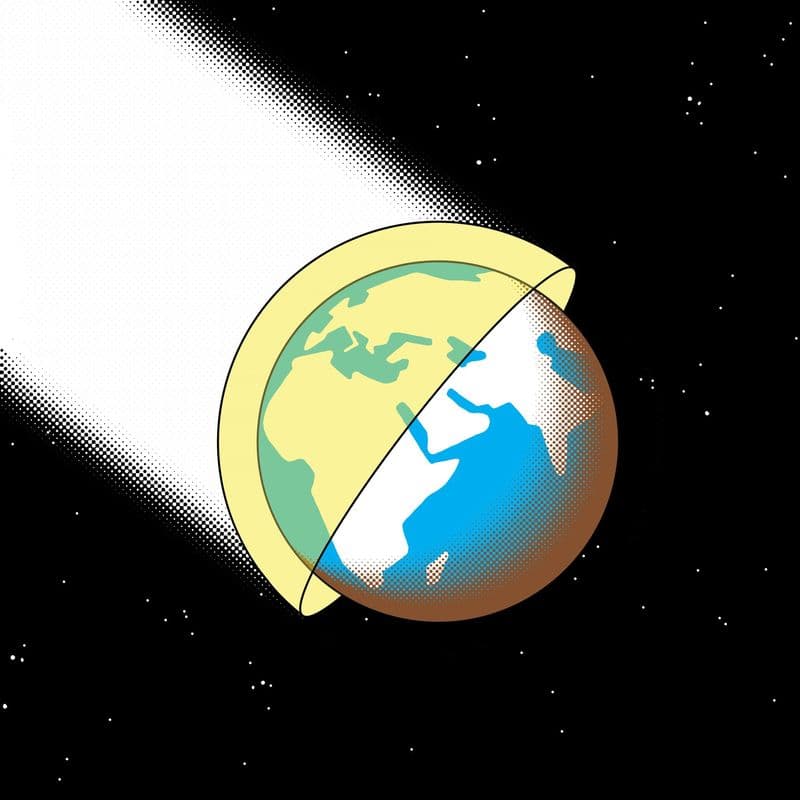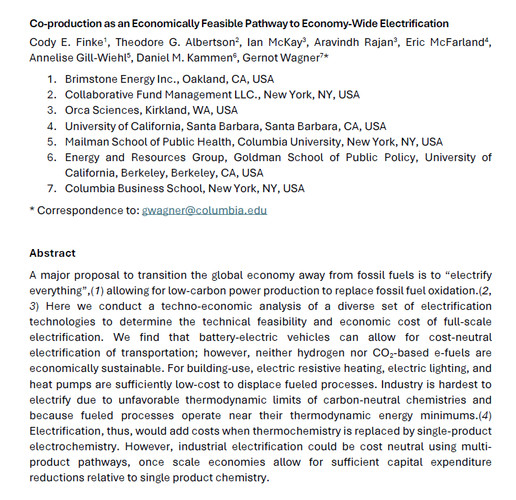Someone's Going to Dim the Big Light
Solar geoengineering is fast, cheap, scary, and inevitable

Illustration: Jonathan Djob Nkondo for Bloomberg Green
Congratulations. You’ve done everything humanly possible to cut carbon dioxide—to zero. But what if even that won’t be enough?
It’s one of the most uncomfortable realizations in climate research. Inertia in the climate system implies that even if emissions stopped, temperatures and especially sea levels would continue to rise for a long time. The logical conclusion leads almost immediately to the specter of solar geoengineering, an attempt to use technology to reflect a portion of sunlight back into space. The principle behind solar geoengineering is simple enough. With less sunshine coming through the atmosphere, the planet would invariably cool—and fast. At least temporarily. There’s even a natural analogue: the eruption of Mount Pinatubo in the Philippines. In June 1992—ironically, the same time as the pivotal Rio de Janeiro Earth Summit—global average temperatures were about 0.5C cooler than they would have been without all the ash and sulfur dioxide, SO₂, catapulted into the lower stratosphere by the volcano a year prior.
Alas, the millions of tons of gunk from Mount Pinatubo soon fell out of the stratosphere, temperatures shot back up—and they’ve been increasing since.
That leads to another thought experiment. What if some entity, be it an international body or a lone nation, decided to use large-scale tech to re-create the cooling effects of a volcanic eruption? The engineering would be straightforward: release SO₂ near the equator about 20 kilometers (12.4 miles) up into the stratosphere. The SO₂ would turn into tiny reflective sulfate particles that would spread around the globe within weeks and linger for months. A bit of sunlight would be reflected away, and everything down below would be cooled.
This is the premise of solar geoengineering via stratospheric aerosols. It’s fast. Unlike cutting CO₂, adding SO₂ cools the Earth within weeks, not decades. It’s powerful. Millions of tons of SO₂ could help offset the global warming effects of hundreds of billions of tons of CO₂. It’s also highly imperfect and risky. It’s akin to adding one type of pollution (SO₂) to help counter the effects of another pollutant (CO₂). Think of it as an experimental drug taken in a pandemic. It might show promise, but watch out for unknown side effects.
In fact, SO₂ is a harmful pollutant. Burning fossil fuels releases tens of millions of tons of SO₂ into the lower atmosphere, killing about 4 million people each year through heart disease, stroke, and lung cancer. The resulting acid rain kills trees and melts medieval cathedrals. If all SO₂ emissions were to stop overnight, it would be a boon to human health but a setback for global warming because it cools the planet. Average global temperatures would rise by at least 0.5C—an eruption of Mount Pinatubo in reverse.
It was precisely this thought experiment that led to a resurgence in solar geoengineering research. Too little is known to actually do solar geoengineering now, and research funding is less than $20 million a year. By comparison, the federal government alone spends more than $2 billion on climate research, according to the U.S. Global Change Research Program. Of the few dozen climate scientists actively engaged in the research, most focus on computer models. Only a handful are conducting lab experiments. A Harvard group is working on an experimental balloon platform, as well as on alternatives to SO₂. Calcium carbonate has shown promise in models and the lab. (I was until last year the founding co-director of Harvard’s Solar Geoengineering Research Program.) Much more research is needed to make anything akin to an informed deployment decision, and any process of moving toward deployment will be messy.
Solar geoengineering is potentially so powerful that one actor might be able to lower temperatures for the globe. It’s only a matter of time before pressure will increase to do just that, regardless of how fast the world slashes CO₂ emissions. With more frequent extreme heat and weather, it’s not hard to foresee conditions miserable enough to make an attempt at a little relief seem worth the risk to some. Limited research is already making one thing clear: Solar geoengineering isn’t only technically feasible, it’s a bargain. Next to the trillions in costs from unmitigated climate change, and even the expense of cutting CO₂, solar geoengineering costs practically nothing. If anything, it’s too cheap. A program that releases SO₂ to decrease average temperatures by about 0.1C would cost less than $5 billion per year. This should prompt the world to prepare for its inevitability. Dozens of countries have both the capacity and possible motivation. The operative word is “when,” not “if.”
Written for and first published by Bloomberg Green's inaugural print magazine, part of my Risky Climate column.

